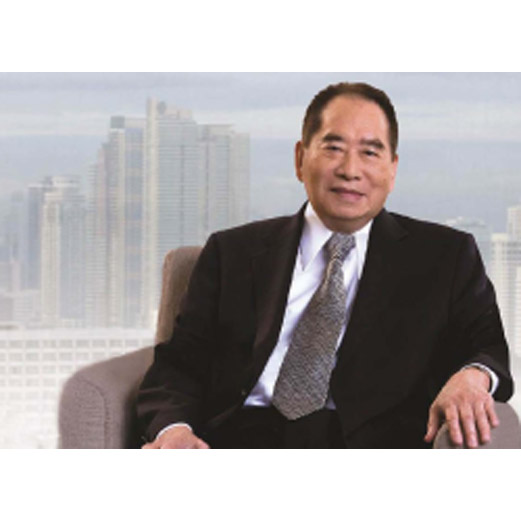
The late Tatang Henry Sy
I asked my daughter if the SM jingle “SM Shoemart, we have it all” is still heard on the air. She laughed at me, “Mom, that’s 20 years ago!”
We at Kaisa Para Sa Kaunlaran remember the jingle very well because SM was the main advertiser of our Sunday children’s television show, the award-winning “Pin-Pin.”
The show uses Hokkien and Filipino to teach Chinese language, values, folk tales, traditions, and heritage. The success of the show can be gleaned by neighborhood Filipino children counting in Hokkien and singing the theme song “Pin-Pin, Pin-Pin, tayo na sa Pin-Pin.”
In the four years that “Pin Pin” was produced, 1991 to 1994, it won three times the CCP Gawad for 10 Best Television Shows. The show was recognized, above all, for showcasing the rich pluralism of Philippine culture and the unique blending of the best of two cultures – Filipino and Chinese.
Above all, it highlighted the Pinoy in the Tsinoy and the Tsinoy in the Pinoy. It was at that time the biggest and most expensive project of Kaisa and we could honestly say it had a lot of impact. We partnered with the Philippine Children’s Television Workshop, producer of Batibot, in this project.
We reminisce about “Pin-Pin” as we remember the late Tatang Henry Sy. I often wondered if we didn’t stop the production of “Pin-Pin” due to increased production costs and had just approached him for help to underwrite the production costs, would we get that kind of support?
After “Pin-Pin,” an even bigger project, the Kaisa Heritage Center, continues to get his support. Our late lifetime trustee, Washington SyCip, hosted a dinner that helped us build a capital fund to support our center and its myriad activities. Tatang Henry attended the dinner and readily matched SyCip’s donation.
To this day, through his eldest daughter Teresita Sy Coson, Kaisa continues to receive annual support from the SM Foundation. Without such support from them and other like-minded people who believe in the work we are doing, it would be difficult to survive because the cost of maintaining the entire center and run all the activities that we undertake and that we hope to continue are prohibitive.
Henry Sy’s Chinese name is Sy Chi Sieng (施至成), which literally translates to giving (施) to reach/achieve (至) success (成). His parents appeared to have the prescience to give him such an apt name. He hailed from Hong Xi or Ang Kue in Minnan (福建晉江洪溪). His birthday as indicated in his passport was Oct. 24, 1924.
Typical of most Tsinoy families where sons were born and got an early education in China, Sy left Ang Kue when he was 11 years old to join his father in the Philippines.
Sy first worked in his father’s small sari-sari store in Quiapo, selling all kinds of dried goods and vegetables. The store was so small that after they closed shop, they had to clear up a space in which to sleep.
World War II totally destroyed their store and his father opted to return to China but Sy chose to stay. He ventured into repackaging, buying and selling varieties of goods as he went to night school and obtained an associate degree in commercial studies at the Far Eastern University.
In the 1950s, Sy ventured into the business of selling surplus American boots. He took the long arduous 40-hour turbo-propelled aircraft to go to the United States to procure the boots and shoes. He eventually earned and saved enough to open the first ShoeMart store in 1958 located on Carriedo St., Quiapo, Manila.
He emphasized that one doesn’t just go to bed and become rich overnight. Success is not just a matter of good luck. It is hard work, perseverance, trust, opportunities and timeliness. It is being willing to take risks and seize the time and opportunity as well.
His contemporaries recount seeing him in faded T-shirts and slippers, manning the cash box and also helping out stacking boxes, assisting customers, and even cleaning up when the store closed.
He never forgot these humble beginnings, even after he was an acknowledged successful businessman. He has been sighted in local markets shopping, as well as in a crowded food court in Singapore, having his meal while standing up, just like everyone else.
In 1970, from selling shoes, the store expanded to become a department store and in 1972, ShoeMart became the SM Department Store. It was in 1985 when the first SM supermall – SM City North EDSA – with 200,000 square meters’ rental area, astounded Pinoys. You name it, the store got it all – books, toys, cinemas, shoes, brand name goods, banks and other attractions. It was the first one-stop shop haven for shoppers.
Today, the mall culture has become a part of Filipino family traditions. Special occasions are held in restaurants inside the malls so the family can go shopping afterwards, especially when there are visiting balikbayans. This was just the start, as more of Sy’s mammoth malls popped up across the country, some even containing ice skating rinks, a rarity in tropical Philippines.
The iconic SM Mall of Asia, on a sprawling 400,000 sq. m. property by Manila Bay, was the first of its kind in Southeast Asia. It offers a wide range of entertainment and amenities – including an Imax theater, skating rink, and weekly fireworks – that exceeds the standard fare of shops, restaurants and movie houses in other malls.
Sy’s small Carriedo shoe store has expanded into the family’s empire – SM Investments Corp. – that was listed in the Stock Exchange in 2005.
To date, SM has 70 malls in the Philippines and seven in China, as well as six hotels and eight office buildings, banks, and real estate property development like high rise condominiums.
